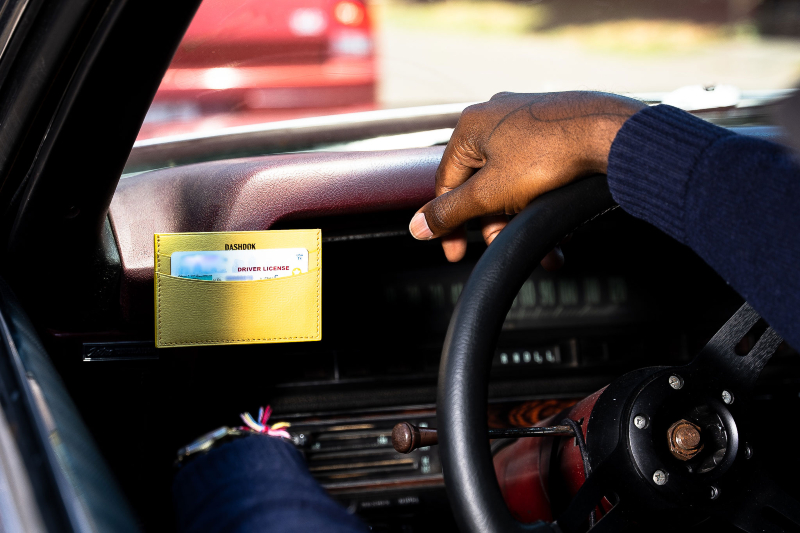
Interactions between police officers and people are rarely fun and, as we’ve seen too many times, can turn deadly quickly, and African-Americans are especially attuned to this issue. While social and political reform moves slowly, entrepreneur Jeremy Roberts’ new product might provide a simple yet profound positive impact.
“We have two different groups of stakeholders who are not seeing eye to eye,” Roberts said. “It’s a charged topic, so we set out to be solutions-oriented for all parties involved, regardless of the motivation. Traffic stops are dangerous for both parties.”
Enter the Dashdok, an understated, daily-use cardholder that magnetically docks to dashboards. With an attached Dashdok, parties who are pulled over have easy, tension-free access to everything law enforcement needs. There’s much less reason for either party to lose their cool with hands remaining visible.
The bulk of Roberts’ perspective on the Dashdok comes from personal experience and understanding that others have gone through the same thing.
“I’ve been pulled over more times than I like to admit,” Roberts said. “You talk to friends and people around you and the people that you meet and at a certain point, the stories all become the same.”
Roberts also maintains myriad relationships with police officers, who commiserate about the issue themselves, across the country, including in Portland, Oregon, California, and Iowa. These officers, retired and current, provided insight from their side as well, helping the Dashdok creator to understand their motivations and the reasons that things go down as they too often do.
“Dashdok represents one less thing to worry about. It’s a chance for smoother traffic stops because it offers a more efficient way to retrieve information — reducing driver movement inside the vehicle. This reduces stress and anxiety for both community members and police,” a former Portland Police Bureau deputy is quoted on Dashdok’s website.
Related Guides
A former product design and apparel manufacturer in New York City, Roberts was able to lean into this design background to not only create a functional product, but focus on its quality and aesthetic.
“Sustainability was front of mind,” Roberts said. “We have a cotton version and two leather versions. I didn’t want to use plastic that doesn’t last as long and can chip over time, seeing what that does to the environment. We’re all about quality and care.”
Cardholders are available in three styles — Combs, Wright, and Avery — all featuring several color options and prices that meet the consumer where they’re at. Combs, retailing for $26, has a cotton exterior; Wright, $90, from artisanal leather; Avery, $212, from supple goat skin.
“We want to meet the consumer where they’re at. The problem we’re solving goes across economic bounds,” Roberts said.
Each cardholder comes with a magnetic base for docking. First, users insert and organize cards: driver’s license, vehicle registration, proof of insurance, credit cards, etc. The next step is docking the magnetic base in either the driver’s-side air vent or on the dash. A metal plate in the cardholder holds it in place when driving and the Dashdok pops off for an easy fit in pockets or handbags.
Dashdok began taking orders mid-September and hopes to be shipping out products by the end of October. Roberts said that he knew a global manufacturing operation would be a hurdle, so the company is shipping by air for now; www.dashdok.com.
Read More: Off-Roading 101



